Fifteenth-century Wallachian prince Vlad Tepes is all too often credited with being Dracula, the vampire-count featured in the classic Gothic horror story Dracula (1897) written by Anglo-Irish novelist Bram Stoker.
The association of these two unholy figures – one historical, the other fictitious – is nothing more than a product of popular imagination though. But while Romanians increasingly reap the tourist reward of this confusion, many are concerned that the identity of a significant figure in their history has been overshadowed by that of an immortal literary vampire. So, Romania sells Dracula reluctantly.
But, truth be told, I am not troubled by such inner conflicts. So, last winter I hopped on a plane to look for Dracula. Both of them.
************
The ‘real’ Dracula, Vlad Tepes, a Wallachian born in 1431 in Sighisoara, ruled Wallachia in 1448, 1456-1462 and 1476:
Stories of his cruelty and thirst for blood abound – stories that make even Stalin or Hitler seem compassionate by comparison…
Vlad gained the name ‘Tepes’ (‘impaler’) from his favorite form of punishing his enemies. A wooden stake was carefully driven through the victim’s anus, to emerge from the body just below the shoulder in such a way as to not pierce any vital organs. This ensured at least 48 hours of unimaginable suffering before death.
Although impalement was Vlad Dracula’s favorite method of torture, it was by no means his only method. The list of tortures employed by the prince includes nails in heads, cutting off of limbs, blinding, strangulation, burning, cutting off of noses and ears, mutilation of sexual organs (especially for women), scalping, skinning, exposure to the elements or to wild animals and burning alive.
Other examples and stories include:
“He had a large pot made and boards with holes fastened over it and had people’s heads shoved through there and imprisoned them in this. And he had the pot filled with water and a big fire made under the pot and thus let the people cry out pitiably until they were boiled quite to death.”
“He devised dreadful, frightful, unspeakable torments, such as impaling together mothers and children nursing at their breasts so that the children kicked convulsively at their mothers’ breasts until dead. In like manner he cut open mothers’ breasts and stuffed their children’s heads through and thus impaled both.”
“He had all kinds of people impaled sideways: Christians, Jews, heathens, so that they moved and twitched and whimpered in confusion a long time like frogs.”
“About three hundred gypsies came into his country. Then he selected the best three of them and had them roasted; these the others had to eat.”
Now, in the interest of fairness, it must be said that it is impossible to verify all of these stories and that much of the information we have about Vlad Dracula comes from pamphlets published in Germany and Russia shortly after his death. And the German pamphlets, at least initially, may have been politically inspired. The pamphlets were also a form of mass entertainment in a society where the printing press was just coming into widespread use. Much like the subject matter of the tabloids of today, the life and times of the Wallachian tyrant were easily sensationalized and given the numerous reprints of the pamphlets following Dracula’s death, it would seem they were quite popular.
The German pamphlets painted Dracula as an inhuman monster who terrorized the land and butchered innocents with sadistic glee. The Russian pamphlets took a somewhat more measured view, however. The princes of Moscow were at the time just beginning to build the basis of what would become the autocracy of the czars. They were also having considerable trouble with disloyal, often troublesome boyars. Thus, in Russia, Dracula was presented as a cruel but just prince whose actions were directed toward the greater good of his people. Despite the differences in interpretation the pamphlets, regardless of their land of origin, agree remarkably well as to specifics. This level of agreement between the various pamphlets has led many historians to conclude that at least the broad outlines of the events covered actually occurred.
In addition, several of the tales of Vlad Dracula’s atrocities occur in three or more separate and independent accounts, indicating a large measure of veracity. One is this story of how he dispensed with the sick and the poor:
“Dracula was very concerned that all his subjects work and contribute to the common welfare. He once noticed that the poor, vagrants, beggars and cripples had become very numerous in his land. Consequently, he issued an invitation to all the poor and sick in Wallachia to come to Târgoviste for a great feast, claiming that no one should go hungry in his land. As the poor and crippled arrived in the city they were ushered into a great hall where a fabulous feast was prepared for them. The prince’s guests ate and drank late into the night, when Dracula himself made an appearance. ‘What else do you desire? Do you want to be without cares, lacking nothing in this world,’ asked the prince. When they responded positively Dracula ordered the hall boarded up and set on fire. None escaped the flames. Dracula explained his action to the boyars by claiming that he did this, ‘in order that they represent no further burden to others so that no one will be poor in my realm.”
No one was immune from such treatment. Another widely disseminated tale involves the arrival in his court of two foreign ambassadors:
“Some Italian ambassadors were sent to him. When they came to him they bowed and removed their hats but they kept on the berets beneath them. Then he asked them why they did not take their caps off, too. They said it was their custom, and they did not even remove them for the Emperor. Dracula said, ‘I wish to reinforce this for you.’ He immediately had their caps nailed firmly on their heads so that their caps would not fall off and their custom would remain. Thus he reinforced it.”
In other versions, the ambassadors are Turkish and the caps are turbans. But the essence of the story remains the same.
Stories such as the above are enough to pique anyone’s curiosity about the individual behind them…
And then, of course as mentioned in the introduction, there is the Dracula created by Bram Stoker and cemented in our imaginations by actors such as Bela Lugosi:
The fictional Count Dracula has now eclipsed the historical Dracula…
What about the Dracula name?
His princely father, Vlad II, was called Vlad Dracul (from the Latin ‘draco’, meaning ‘dragon’) after the chivalric Order of the Dragon accredited to him by Sigismund of Luxembourg in 1431. The Romanian name Draculea – literally ‘son of Dracul’ – was bestowed on Vlad Tepes by his father, and was used as a term of honor. Another meaning of ‘draco’, however, was ‘devil’ and this was the meaning that Stoker’s novel popularized.
Bram Stoker’s inspiration for Count Dracula may be the result of several characters the author discovered in the history of Transylvania – an area where vampires form an integral part of traditional folklore.
Aside from the obvious choice of Vlad Dracula, another character that comes to mind immediately is that of the Magyar Countess Elizabeth Bathory. Accused of torturing and killing hundreds of girls in order to bathe in their blood, Bathory originated from a very old and prosperous family in Transylvania.
It has been suggested that Bram Stoker started with her deeds, but in order to shock more credibly the devotees of horror stories, the vampire had to be a male – the name of “Dracula” being chosen, so it seems, for its suggestive and macabre potential.
Count Dracula’s fictitious castle on Borga Pass was inspired by Cruden Bay castle in Aberdeenshire, where Stoker drafted much of the novel.
And, ironically, although Stoker set Dracula in Transylvania, the novelist himself never set foot in this region.
************
With so many myths and stories about Vlad the Impaler in existence, one struggles to even know where to begin. That is why I found it perhaps easiest to follow in the footsteps of the man himself in order to gain a better understanding of who he was, the places he visited and the life he led…
It seems natural to start our tour with the town in which Dracula, well Vlad Tepes actually, was born and spent his early years. However, I can do even better than that. I can give you the very house in which he was born which still stands today in the lovely town of Sighisoara, Transylvania:
Here is the view from an alley along the side:
A small plaque on the side of the home (which is today a restaurant) commemorates Sighisoara’s most famous son:
As for the town of Sighisoara itself, which is on the Unesco World Heritage list, Vlad would likely not be too lost were he to return to the town of his birth today:
The home in the middle and to the left is the birthplace and childhood home of Vlad Dracula:
The clock tower, which is 64 meters tall, dates from 1280, meaning young Vlad would have enjoyed the same view:
As one crosses Transylvania on a Dracula Tour, it is perhaps inevitable that one will pass through the town of Bran. Despite the best efforts of merchants and tourist authorities to imply otherwise, the castle in Bran is not Dracula’s Castle. It looks as if it should be, complete with secret passages and dramatic appearance… But it isn’t. It is Queen Marie of Romania’s castle. Bran Castle is Dracula for the tourists:
Built by Saxons from Brasov in 1382 to defend Bran against the Turks, there is the possibility the castle may have housed Vlad for a few days during his flight from the Turks following their attack on Poienari fortress in 1462:
The town of Bran:
These mountains surround Bran and provide a dramatic backdrop to the town:
The real Castle Dracula (Poienari Citadel) is much more out of the way and if you visit, you may well have the whole place to yourself. The castle receives few visitors due to its isolated location and the fact that visiting requires a hike up 1,480 steps. However, true Draculaophiles should not miss this one…
This is how Vlad the Impaler’s fortress appeared before it was partially restored… Unfortunately, the northern section collapsed after an earthquake in 1915, along with the stone that supported it:
The surrounding countryside and the woods on the hike up to Vlad Dracula’s Citadel provide great atmosphere. And I expect that much of this area does not look all that different than when Vlad was roaming these lands:
Lake Vidraru is just a kilometer away from Poienari:
The woods surrounding Vlad’s Citadel:
The first view of the castle:
The story of how this fortress was constructed also involves a tale of revenge… Early in his main reign, Vlad Dracula gave a feast for his boyars and their families to celebrate Easter. Vlad was well aware that many of these same nobles were part of the conspiracy that had led to his father’s assassination and the blinding and then burying alive of his elder brother, Mircea.
Many had also played a role in the overthrow of numerous Wallachian princes. During the feast Vlad asked his noble guests how many princes had ruled during their lifetimes. All of the nobles present had outlived several princes. None had seen less then seven reigns. Vlad immediately had all the assembled nobles arrested. The older boyars and their families were impaled on the spot. The younger and healthier nobles and their families were marched north from Targoviste to the ruins of his castle in the mountains above the Arges River. The enslaved boyars and their families were forced to labor for months rebuilding the old castle with materials from a nearby ruin. According to the reports, they labored until the clothes fell off their bodies and then were forced to continue working naked. Perhaps not surprisingly, very few were said to have survived this ordeal:
You can see why the citadel was well located from a strategic perspective… It would have been bloody (heh) difficult to storm this fortress. And, in fact, the only known siege was one by Turkish soldiers in the summer of 1462:
Legend has it that during the siege mentioned above, Vlad’s first wife, a noblewoman of unknown origin, threw herself from a turret into a tributary of the Argeș River flowing below the castle, declaring she would rather rot and be eaten by the fish of the Argeș than be taken into captivity by the Turks.
I hate to get in the way of a good story, but having actually visited Poienari Citadel, I believe that such a plunge would have been impossible. You can see for yourself from the picture below of the distance down to the tributary of the Arges River how implausible that seems… She may have plunged to her death from a turret of the castle, but I doubt she made it to water:
A view back up to the castle of Vlad the Impaler from the valley floor:
Because of its minor role in the context of anti-Ottoman battle, the castle was ultimately abandoned after 1550.
Six kilometers north of Poienari Citadel is Arefu, a tiny village supposedly inhabited solely by descendants of the minions who served Vlad Tepes. The story is that in 1462, when the Turks besieged Poienari Citadel, the Arefians helped Vlad to escape into the mountains. As a gesture of gratitude, Dracula gave the Arefians their pasture lands. And in fact, a document signed by Mircea Ciobanul in 1540 attests to the people of Arefu being granted 16 mountains and 14 sheepfolds by Tepes.
As one criss-crosses not just Transylvania, but Romania, on a Dracula Tour, it soon becomes apparent that escaping the presence of Vlad is impossible:
You’ll notice his image everywhere. This example is in front of the military museum in Bucharest:
And nearly everywhere you go will have some connection to the man… This is just outside the town of Brasov:
When the merchants of Brasov refused to pay taxes in spite of repeated warnings, Dracula led an assault on Brasov in 1459, burned an entire suburb, and impaled numerous captives on a hill overlooking the city.
The scene was immortalized in a woodcut print which appeared as the frontispiece in a pamphlet printed in Nuremberg in 1499. It depicts Vlad having a meal while impaled victims are dying around him. As he eats, his henchmen are hacking off limbs of other victims right next to his table. The narrative begins as follows:
“Here begins a very cruel frightening story about a wild bloodthirsty man Prince Dracula. How he impaled people and roasted them and boiled their heads in a kettle and skinned people and hacked them to pieces like cabbage. He also roasted the children of mothers and they had to eat the children themselves. And many other horrible things are written in this tract and in the land he ruled.”
A similar woodcut print appeared the following year (in Strasbourg) with the caption,
“Here occurred a frightening and shocking history about the wild berserker Prince Dracula.”
Other sites of significance on a Dracula Tour include:
Edirne, Turkey: The capital city of the Ottoman Empire from 1365 to 1453, Vlad Dracula and his brother Radu were sent here as hostages by their father to demonstrate his loyalty to the Ottoman court in exchange for Ottoman support of his return to power.
Although trained in warfare and riding horses as well as educated in logic, the Quran and the Turkish and Persian languages and works of literature (Vlad learned to speak these languages fluently), Dracula was apparently often whipped and beaten because of his verbal abuse towards his trainers and his stubborn behavior.
These years presumably had a great influence on Vlad’s character and likely influenced Vlad’s well-known hatred for the Ottoman Turks. Not to mention, I would think, some “daddy issues” toward his own father for trading him to the Turks and betraying the Order of the Dragon’s oath to fight the Ottoman Empire…
Visegrad and Buda, Hungary: When Vlad Tepes visited Hungary in 1462 to seek help in fighting the Turks, Matthias Corvinus, King of Hungary and Croatia from 1458 until his death in 1490, saw an opportunity. King Matthias had been receiving a steady stream of financial support from the Pope, intended to be used in battle against the Ottomans. However, Matthias had chosen to treat these funds as his personal piggy bank. Now that Matthias had the Turks piling up on his border though, he had a problem and quickly needed a scapegoat. Vlad Dracula arrived at just the right time…
King Matthias had him arrested, using forged letters, in which Vlad supposedly pledged loyalty to Mehmed II and promised to strike an agreement with the Ottomans over Wallachia. Vlad was imprisoned in Visegrad for a time and then transferred to Buda (the western part of the Hungarian capital of Budapest).
Changing geopolitical realities, however, would eventually bring Vlad back into favor and he actually ended up marrying a cousin of King Matthias (Ilona Szilagyi), living with her in the Hungarian capital until his final release in 1474. She bore him two sons: the oldest, Vlad IV Dracula, spent most of his time in the king’s retinue and later was an unsuccessful claimant to the Wallachian throne. The youngest, whose name has been lost to history, lived with the Bishop of Oradea in Transylvania until 1482, when he became ill. He returned to Buda, where he died in his mother’s presence. The descendants of Vlad and Ilona married into Hungarian nobility.
And closer to home in Romania…
Dracula’s Castle: The tacky 53-room Hotel Castel Dracula, better known as Dracula’s Castle, towers 116 meters high on the spot where Bram Stoker set his fictitious Dracula’s castle. Stoker chose the setting well as the views of Tihuta Pass are great. The architect who designed the jagged-edged building in the early 1980s clearly studied many Dracula movies. The rooms sport a lot of cranberry-blood color with dragon motifs. The ‘highlight’ of a visit is a peek into ‘Dracula’s room’, down dark, creaky steps, where visitors are given a short, candlelit tour around the ‘coffin’.
Bucharest: The city, which lies on the Wallachian plains between the Carpathian foothills and the Danube River, was settled by Geto-Dacians as early as 70 BC. By 1459 a princely residence and military citadel had been established under the chancellery of the infamous Prince Vlad Tepes.
Also in Bucharest is the Count Dracula Club, which is a themed restaurant with a touristy Dracula floorshow.
Targoviste: During the first reign of his father, Vlad and his brother were brought to Targoviste, the capital of Wallachia at the time. Here, young Vlad is likely to have been taught combat skills, geography, mathematics, science, languages (Old Bulgarian, German, Latin), and the classical arts and philosophy. Vlad remained in Targoviste until he and his brother were sent as hostages to the Ottoman court.
The court at Targoviste was built in the 14th century and remained a residence for Wallachia’s princes until the reign of Constantin Brancoveanu (r 1688-1714). During his reign, Vlad Tepes added the 27m-high Sunset Tower which now houses an exhibition recounting stories of Dracula’s life. One display describes how he made sure impaled Turkish soldiers had their eyes gouged out so they couldn’t see the heavenly maidens they believed awaited them after death.
It was here as well that Vlad Dracula’s father was murdered and so, also at Targoviste, that Dracula devised his revenge (described above in the discussion of Poienari Citadel).
Sibiu: Vlad the Impaler’s son, Prince Mihnea the Evil, was assassinated on the stairs of the Evangelical Church here in 1510… During Vlad’s time, it is said that he had ten thousand people impaled in the town of Sibiu in 1460.
Snagov Lake and Monastery: The tiny island in the middle of the lake is home to a 16th-century monastery and, allegedly, the headless remains of Vlad Tepes. In 1456 Vlad the Impaler built fortifications around an existing monastery. He also built a bridge from the lake to the mainland, a bell tower, a new church, an escape tunnel and a prison and torture chamber.
The present stone church, listed as a Unesco World Heritage building, dates from 1521. The body of Vlad Tepes was said to be buried below the dome, just in front of the church’s wooden iconostasis, but when the grave was opened in 1931 it was reported to be empty. Nevertheless, there is mounting credibility given to the idea that the island does indeed serve as the last resting place for (most of) the remains of Vlad Dracula. But, who knows? The humble grave inside the church, marked by a portrait of Vlad, is simply known as ‘Dracula’s tomb’ today.
No one knows for sure how Vlad the Impaler died; although eventually the Turks decapitated his body and his head was sent to Constantinople (allegedly preserved in honey) where the sultan had it displayed on a stake as proof that Vlad Dracula was finally dead.
What is known is that he was killed during a battle against the Turks near Bucharest in December of 1476. Some reports indicate that he was assassinated by disloyal Wallachian boyars just as he was about to sweep the Turks from the field. Other accounts have him falling in defeat, surrounded by the ranks of his loyal Moldavian bodyguard. Still other reports claim that Vlad, at the moment of victory, was accidentally struck down by one of his own men. Taking all details into account though, assassination seems the most likely explanation.
************
This is as close as I ended up getting to Vlad the Impaler – in this instance with a circa-1981 porno mustache:
However, I still feel as if I have a better understanding of the man. I do not wish to diminish his unpleasant punishments, but feel that they must be brought into some context. Dracula lived in a rough neighborhood during a rough time and was truly a product of his era. At that time in all of feudal Europe, there was a climate of cruelty, and Vlad the Impaler, characterized by his enemies as a sinister monster thirsting for human blood, did not outdo many other monarchs of the 15th and 16th centuries, such as Louis XI, Ivan the Terrible, Henry the VIII or Matthias Corvinus. And many Romanians continue to maintain that Vlad the Impaler was a sort of Robin Hood figure – dispensing strong justice, but at the same time a reliable friend of the people. They argue that Vlad Dracula’s true significance was his contribution to maintaining the existence of the Wallachian state by fighting off the Turks, led by Mohammed II, the conqueror of Constantinople.
Even Vlad’s favorite method of torture was not unusual in medieval Europe. Tepes’ first cousin, Stefan cel Mare, is said to have ‘impaled by the navel, diagonally, one on top of each other’ 2,300 Turkish prisoners in 1473. That Vlad was likely raped repeatedly as a boy and teen in his captive years in a Turkish prison adds another dimension to his favored method of torture.
While Vlad Tepes died in 1476, and Stoker in 1912, Count Dracula lives on, sustaining an extraordinary subculture of literature and film. The novel itself has never been out of print, while film-makers have remade the film countless times, kicking off with FW Murnau’s silent Nosferatu (1922) and multiplying it into dozens of spin-offs including such gems as Billy the Kid vs. Dracula (1966) and Vampyros Lesbos (1971).
I hope you got something out of my search for Vlad Dracula. And should you engage in your own search, I hope you find what you are looking for – even if it is just a cool Halloween trip…
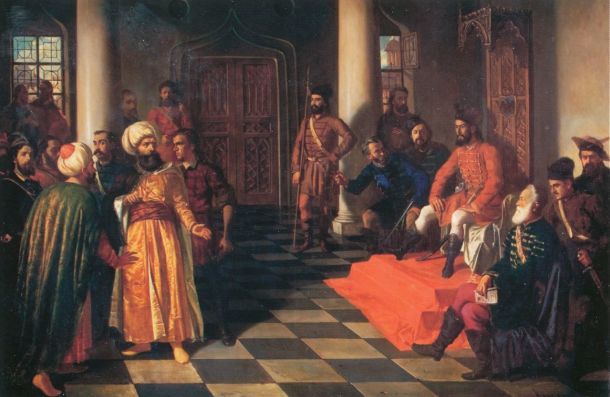
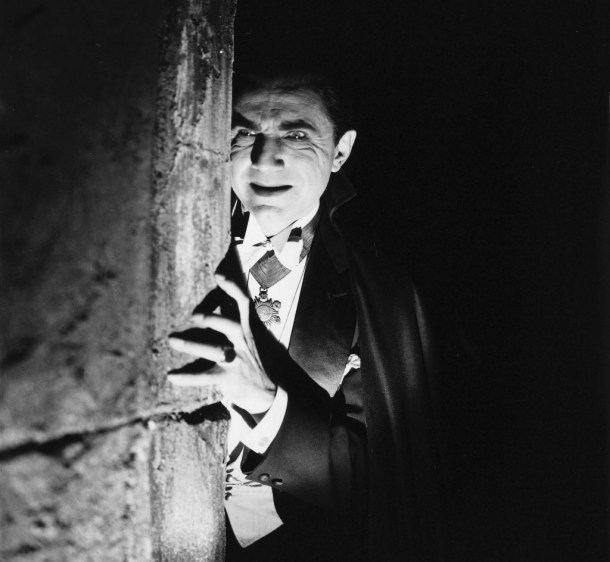
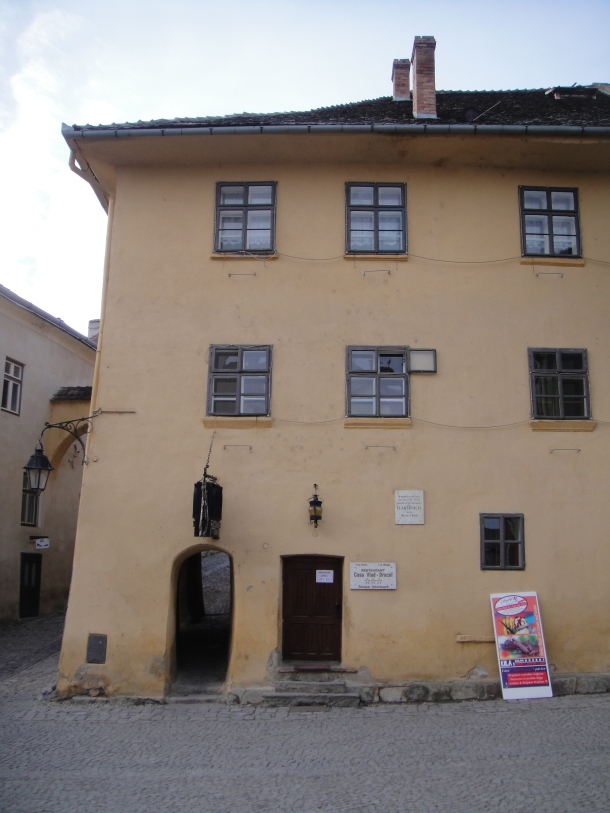
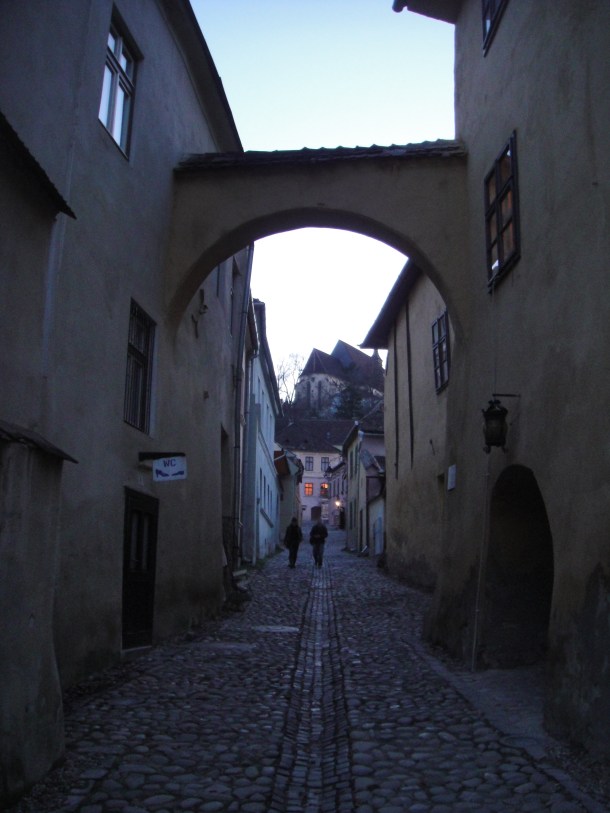
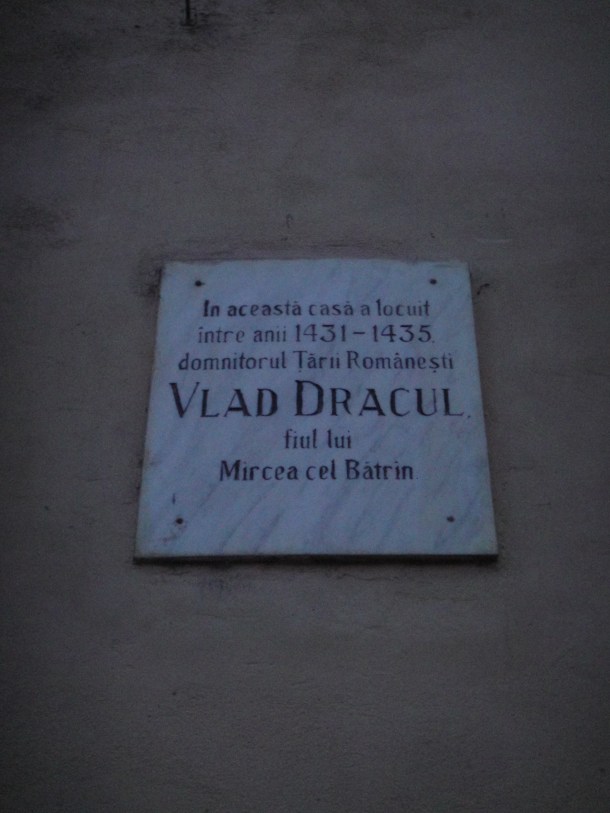
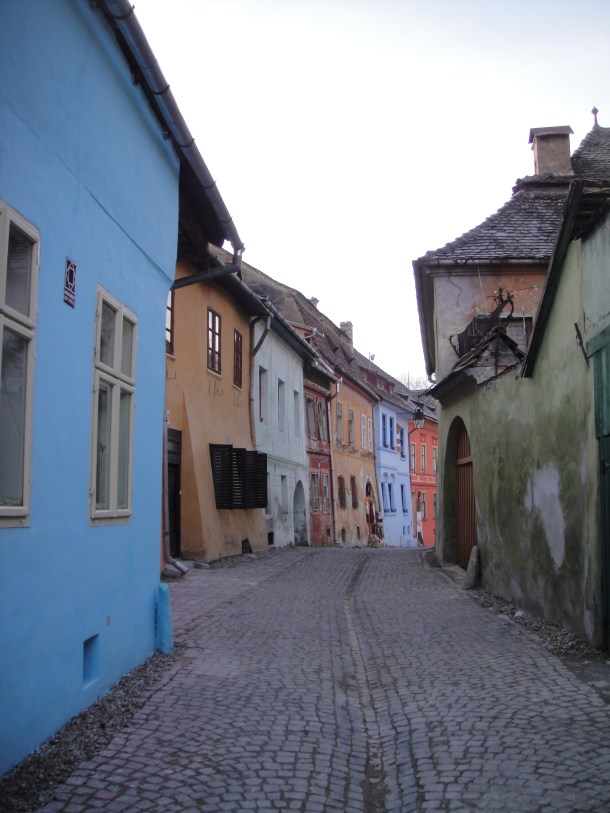
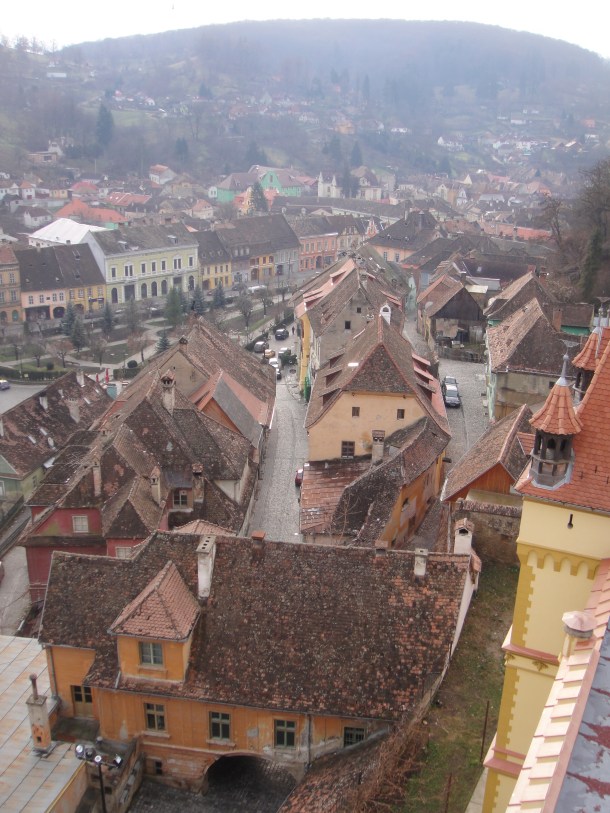
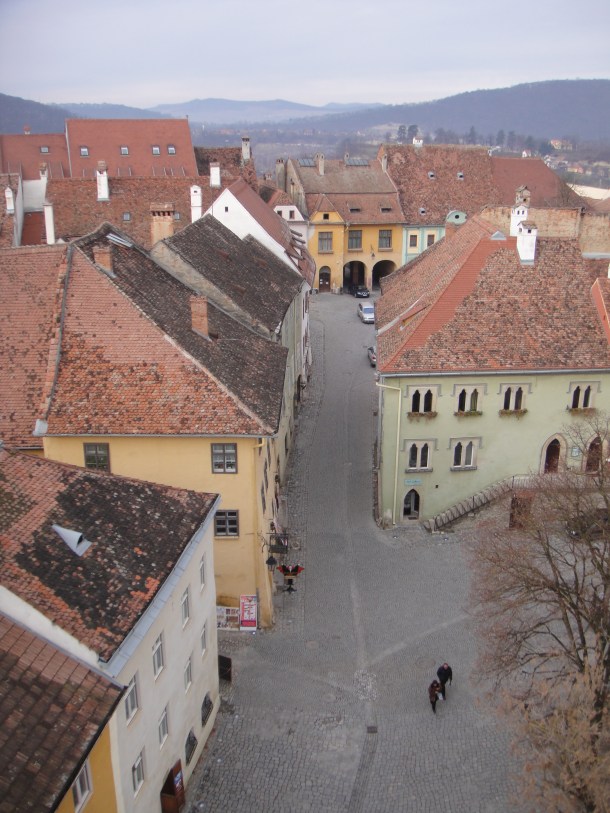
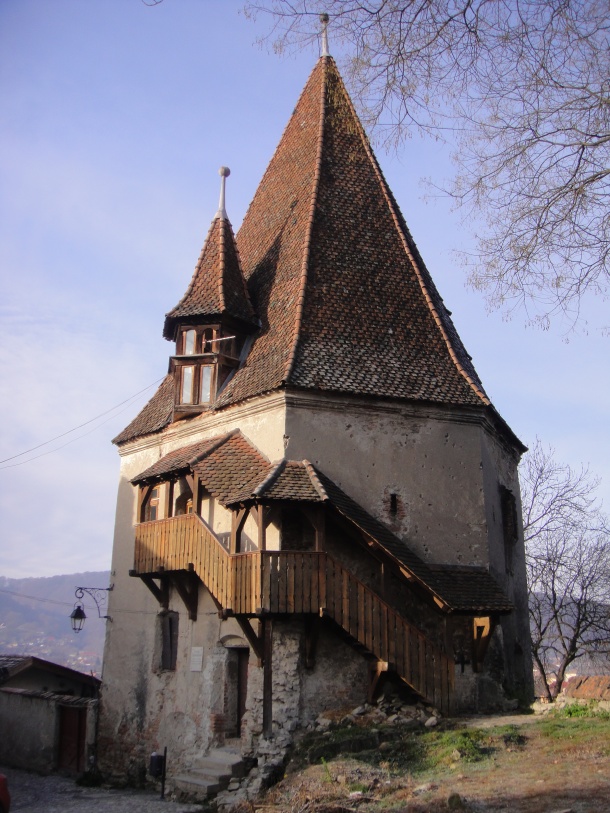
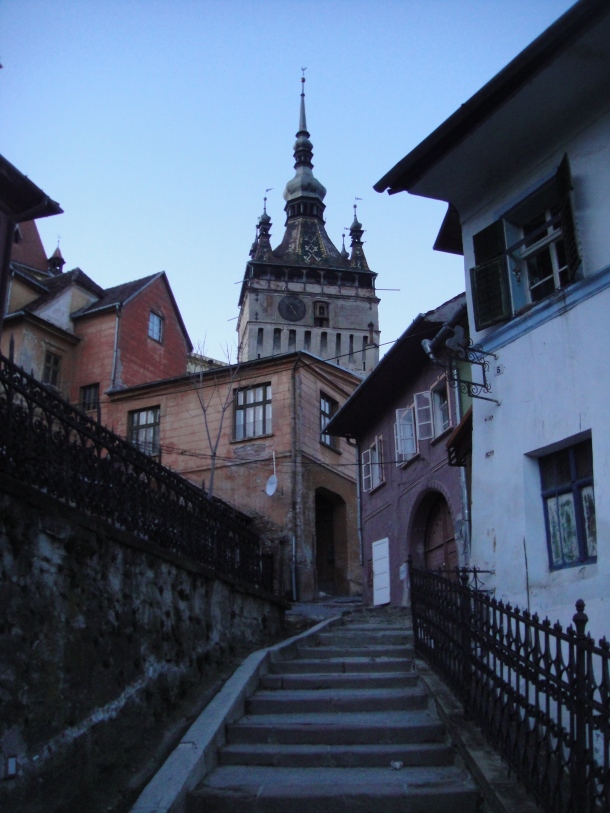
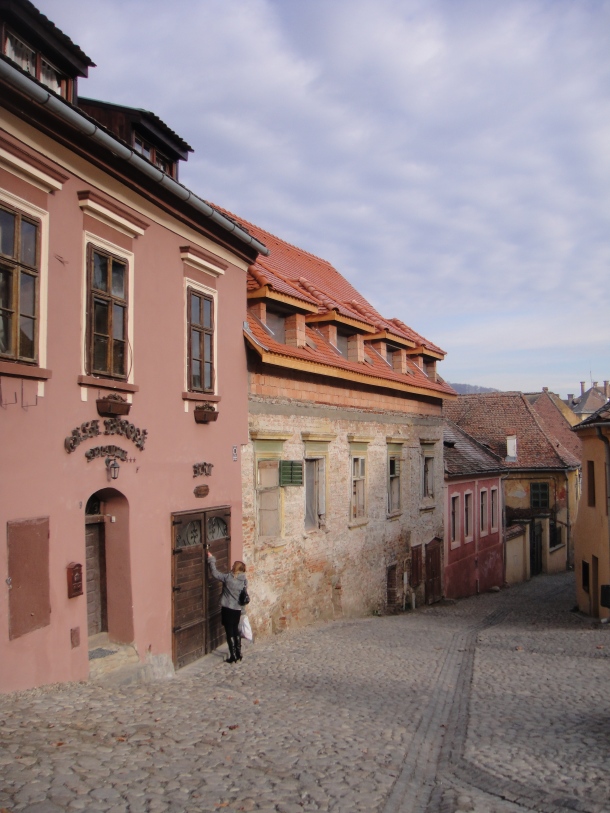
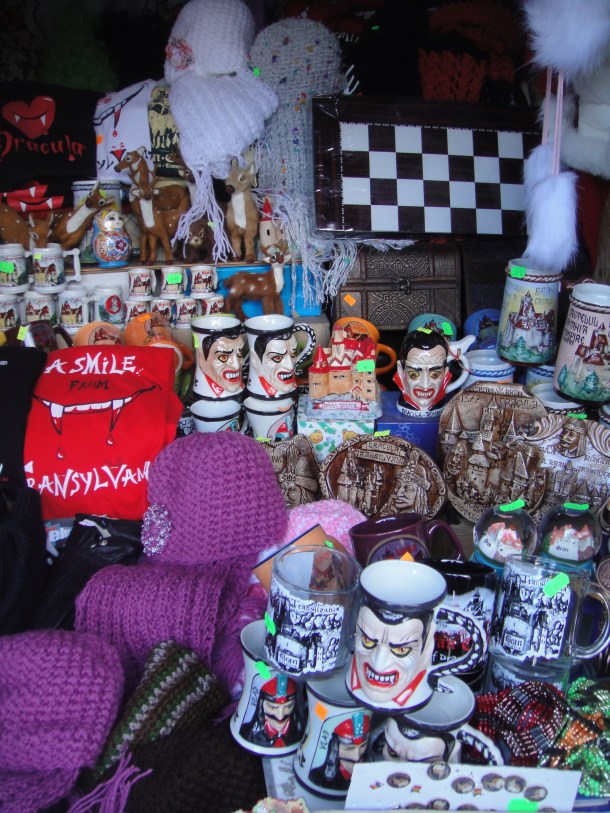
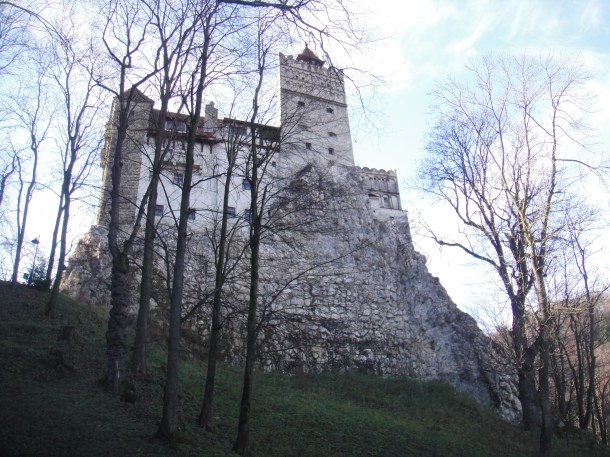
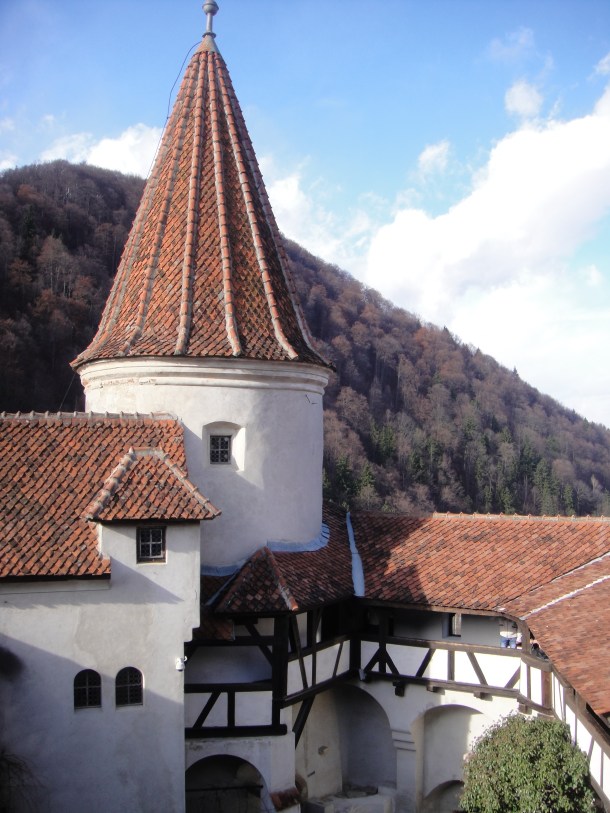
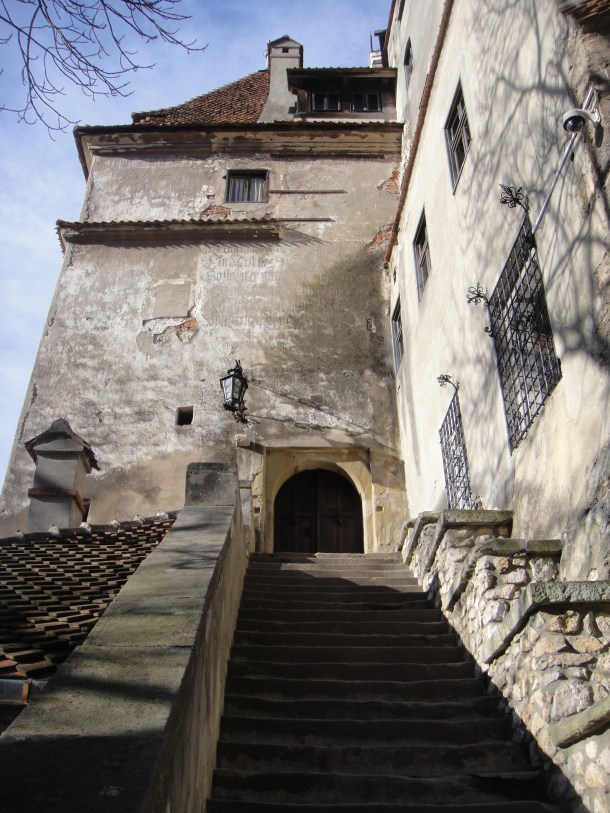
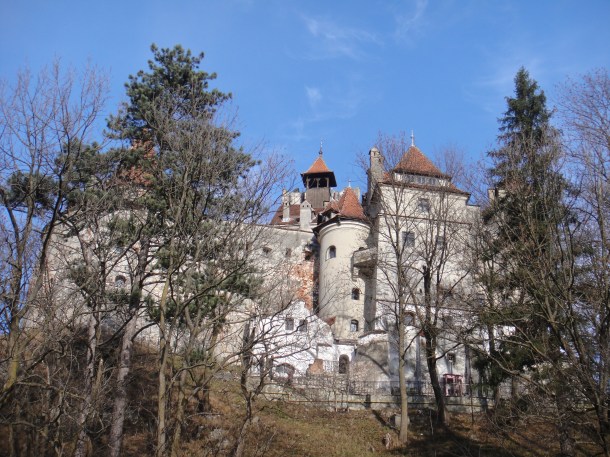
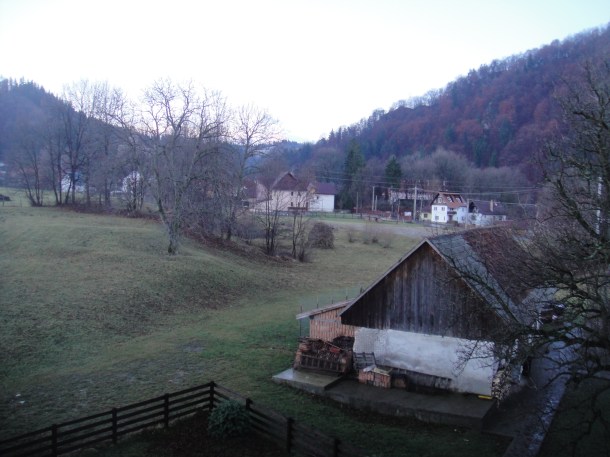
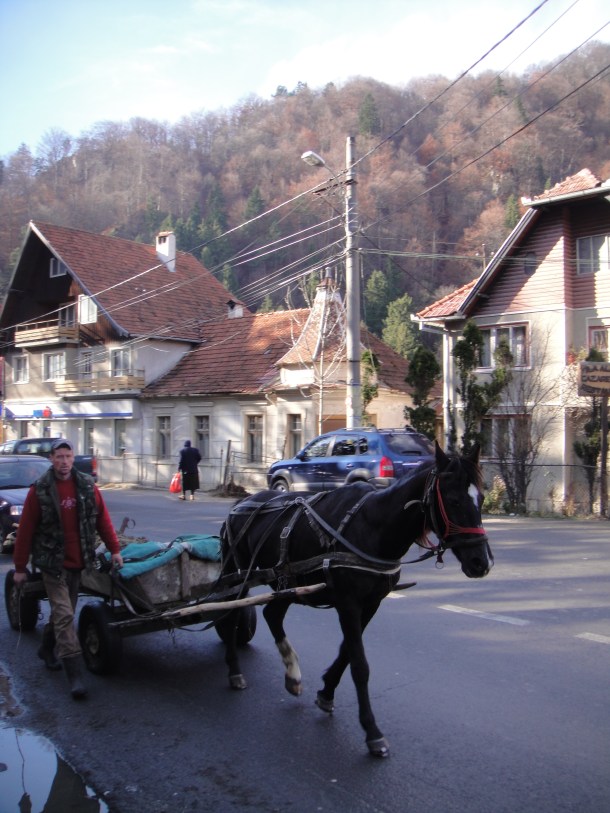
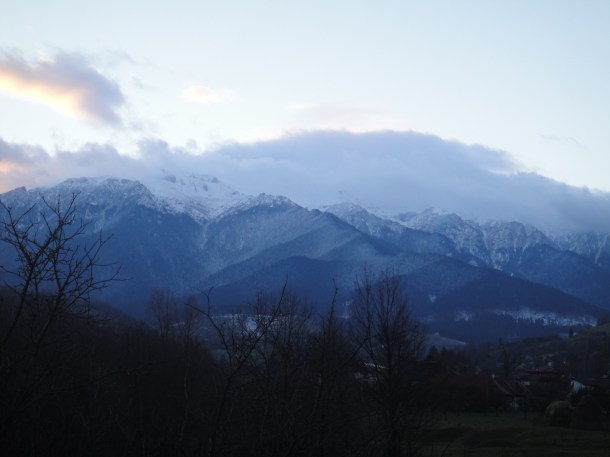
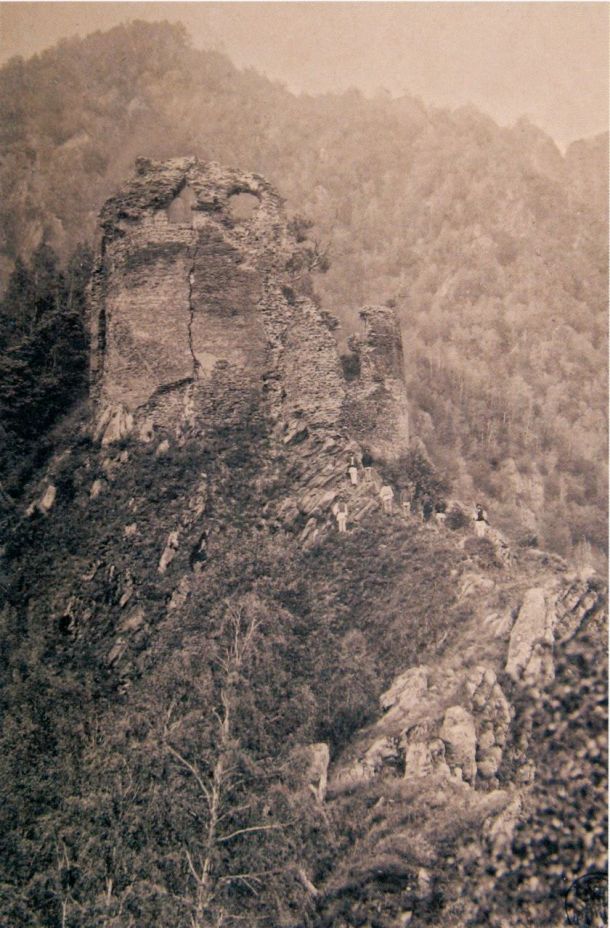
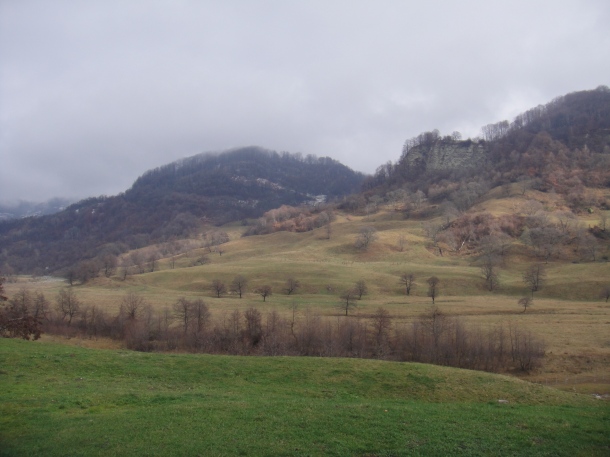
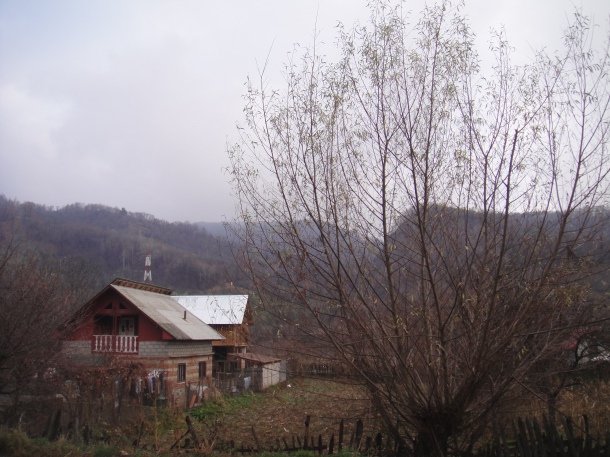
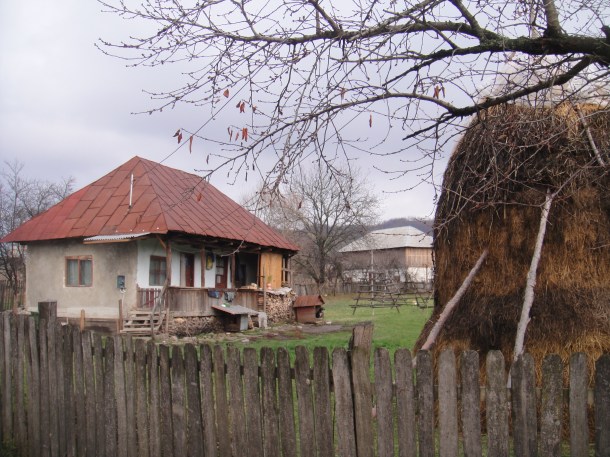
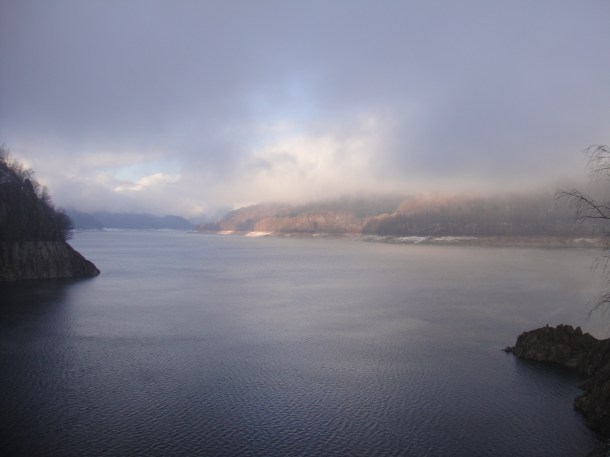
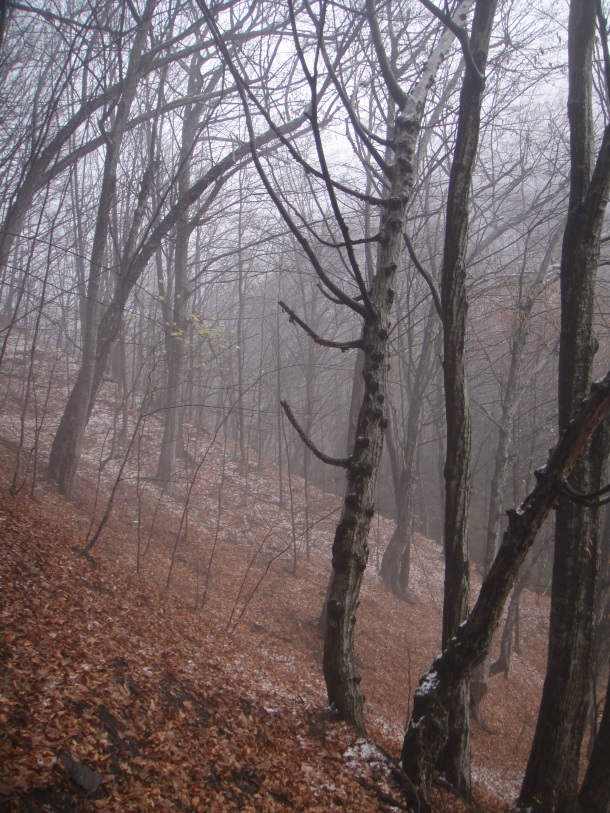
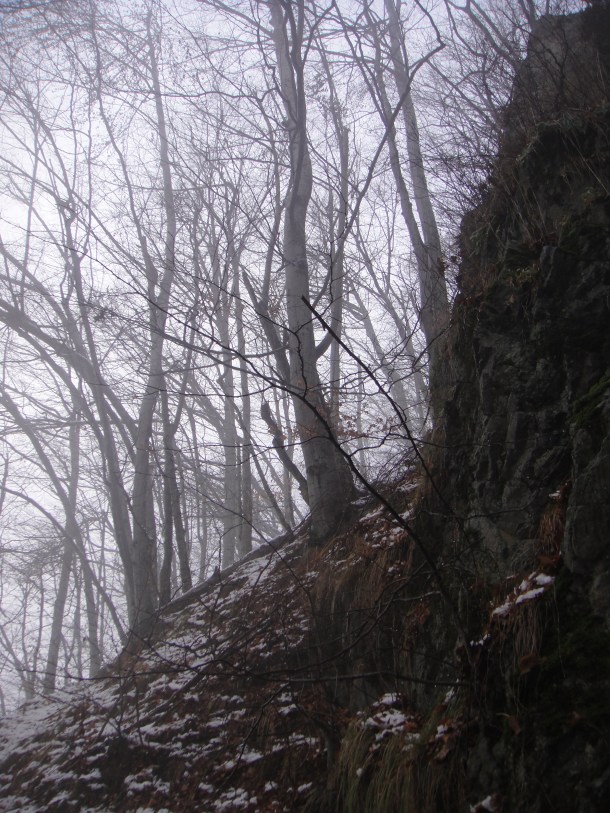
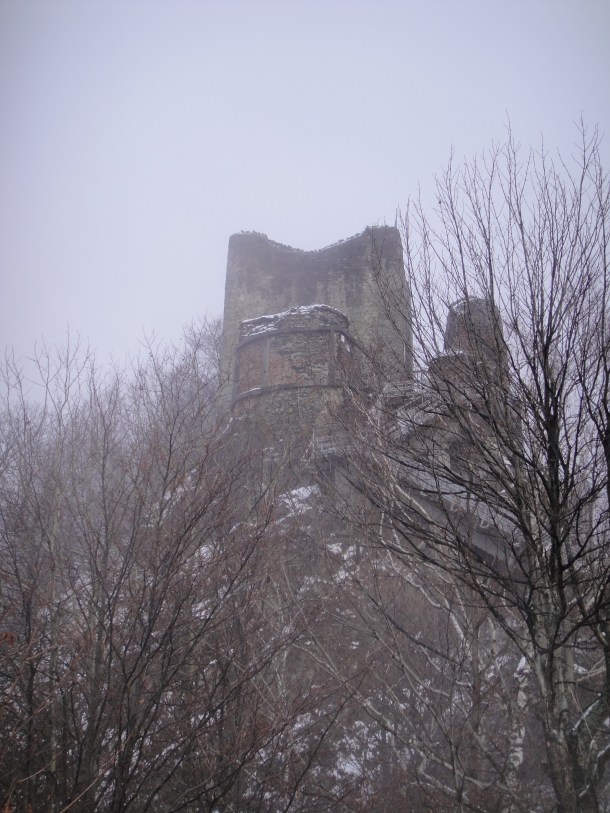
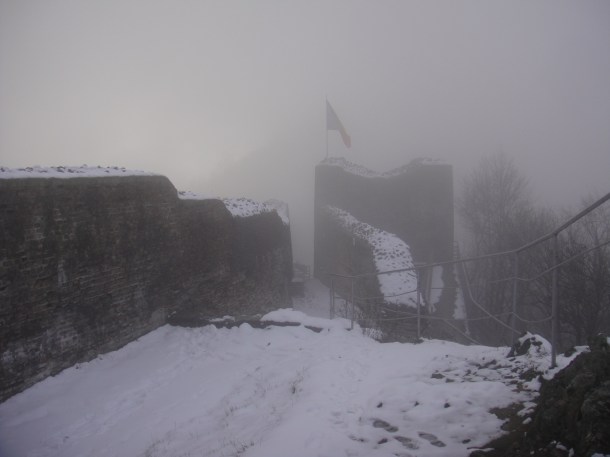
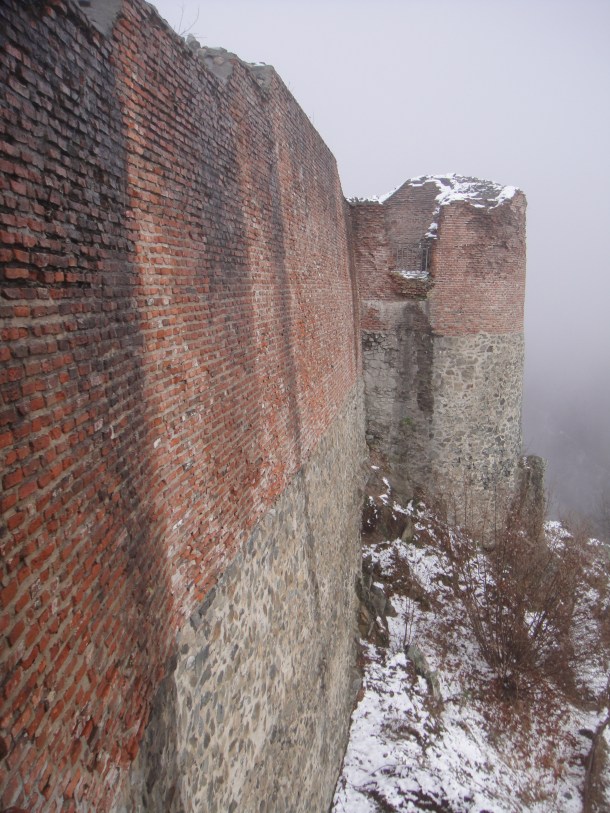
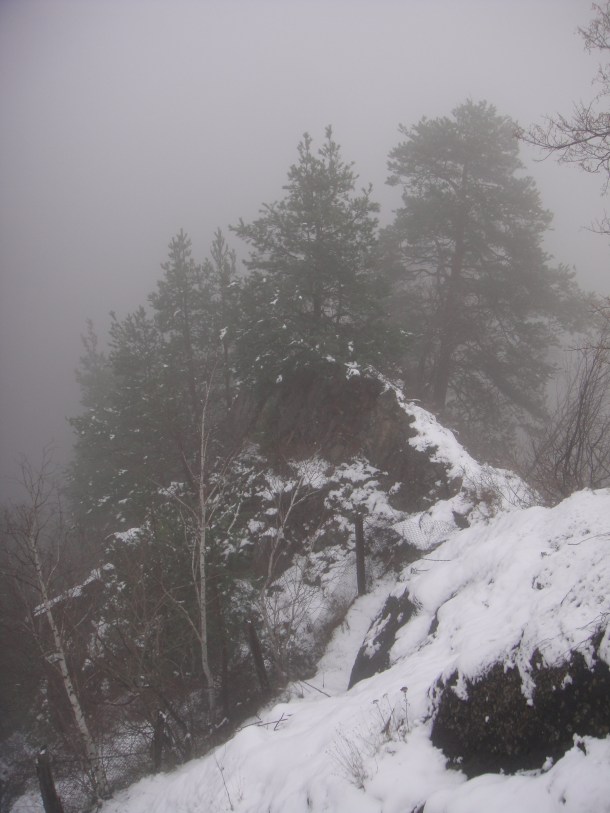
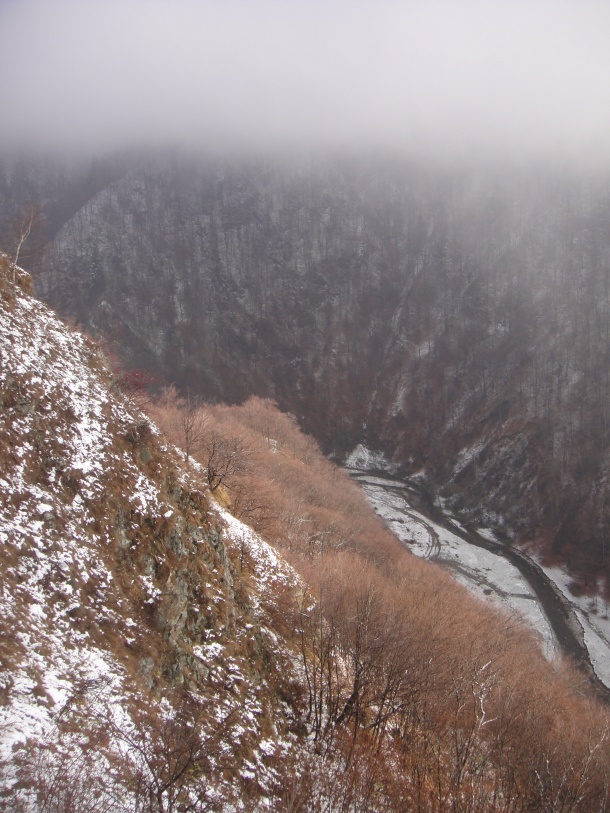
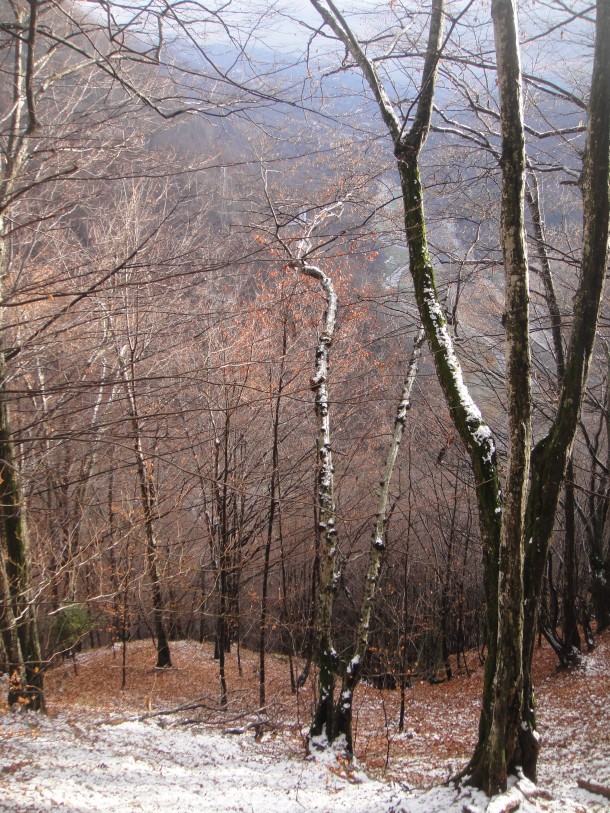
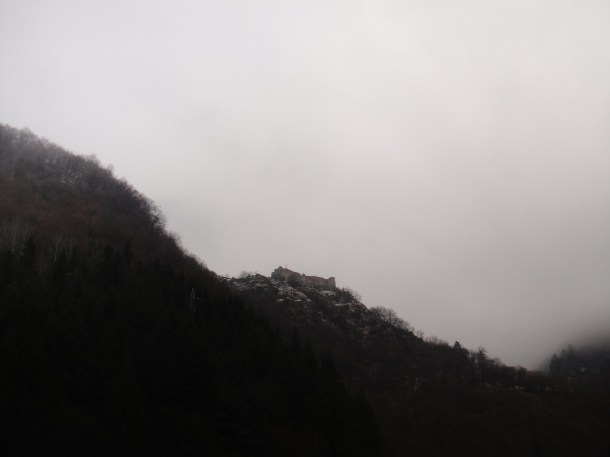
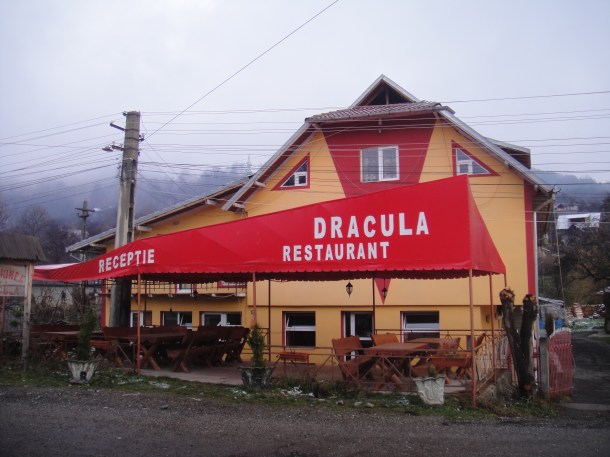
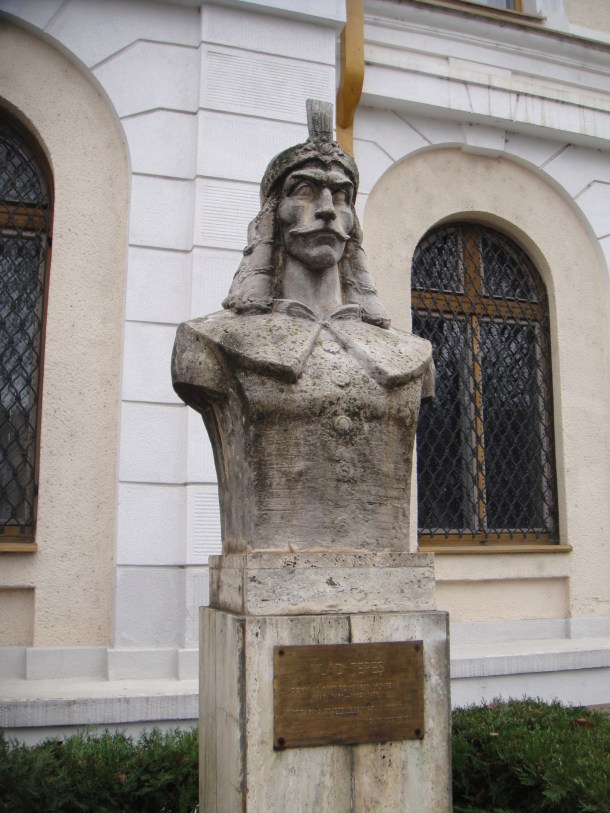
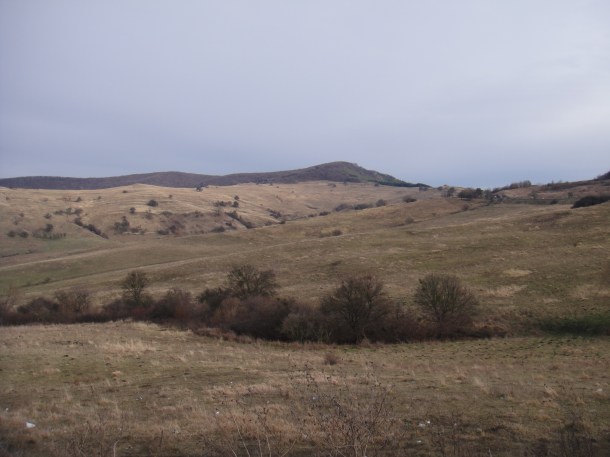
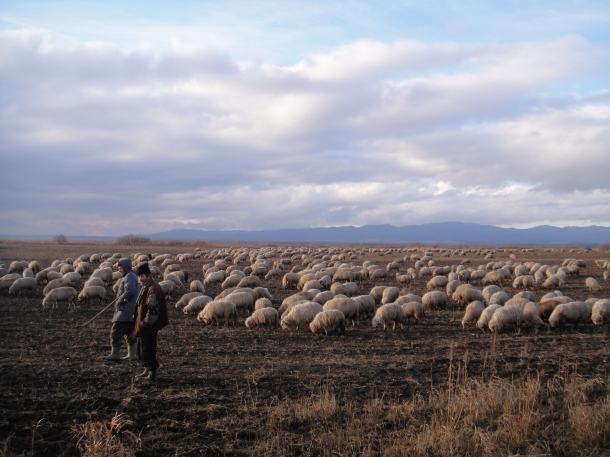
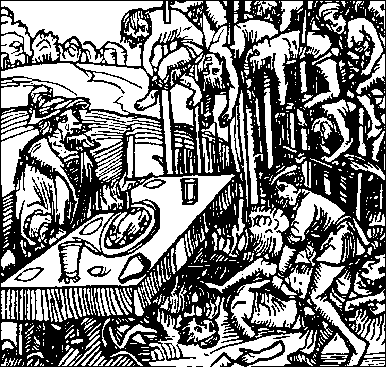
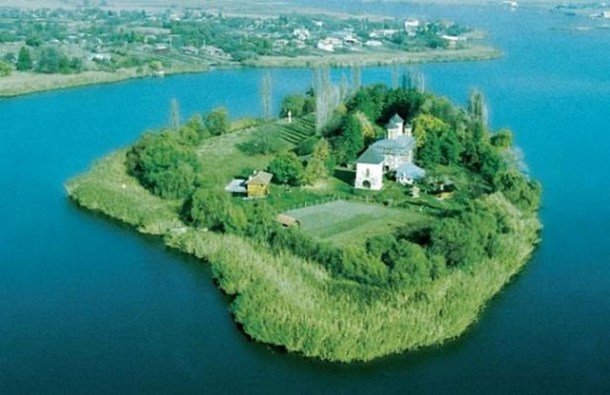
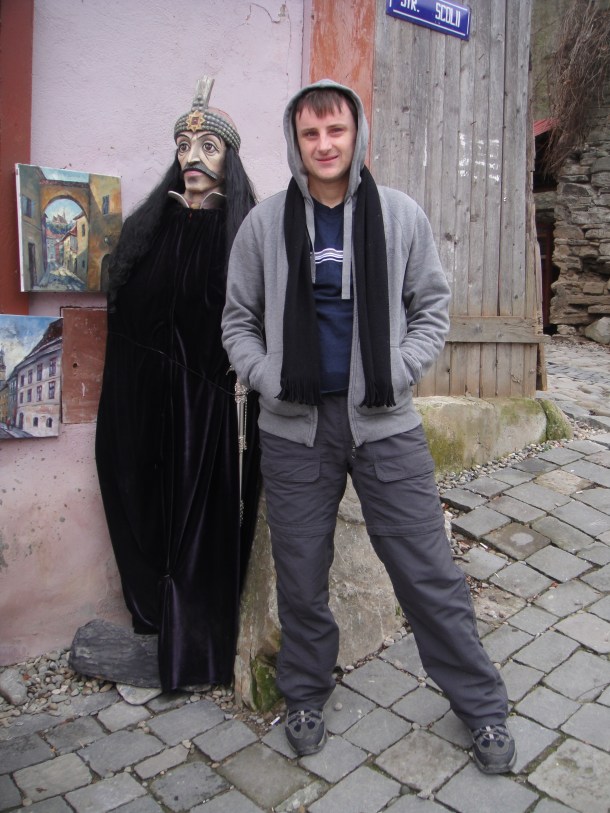
I was there last year in early October. And there wasn’t any snow around Wallachia or southern Translyvania. I remember it being a bit chilly at night though warm during the day so I’d bring a sweater or light jacket.
As for Dracula, here’s something I wrote for the Poltics Branch for Halloween last year:
Politics of Dracula
For most of the world, the name Dracula conjures up the image of a evil vampire nobleman who lives in a sinister-looking castle perched on a mountain side somewhere in the haunted land of Transylvania. What some don’t realize is that there was a historical Dracula but he wasn’t a vampire.
In Romania, Dracula is seen in two ways. One is as generator of tourist dollars. The other view is of a national hero who fought to preserve Romanian identity and independence.
The name “Dracula” is actually an honorary title meaning: “Son of the Dragon”. Dracula’s real name was Vlad III. His father Vlad II was knighted by the Holy Roman Emperor as a Knight of the Order of the Dragon, pledged to defend Christianity. In those days, it wasn’t vampires people feared but Turks. The Ottoman Turks were a growing threat to the whole region. The Royal Dragon Knights were sworn to fight this threat.
In Romanian, the word for “dragon” is “dracul” and “dracula” or “draculea” means “son of the Dragon”. Vlad II was lord of Translyvania at the time and at his knighting, he was named Prince of Wallachia, a region of modern-day Romania. He wore the Order’s symbol, a dragon suspended from a cross, on his clothing and minted it on his coins. He was called Dracul and sometimes Dracula. “Dracul” has a double meaning as well. It means “Devil”. Enemies of Vlad III began to use this meaning that he was the “son of the Devil” because as Prince, Vlad III was one mean son of a bitch.
Vlad III was born in Translyvania in 1431 but was later sent as a hostage to Turkey along with his younger brother. After his father and older brother were assassinated, Vlad III returned to become Prince but he was driven off. He later returned and killed his rival and became Prince for 6 years.
It was durng this time he earned the savory surname of “Tepes” (the Impaler) out of his habit of impaling criminals, traitors, Turkish prisoners, corrupt merchants and anyone he just didn’t like.
One fine Easter morning, he invited nobles suspected of doing in his old dad to a feast. After a few opening jokes, Vlad Tepes got straight to the point or rather he gave them the point from the end of a sharpened stake. Those spared this fate were taken on a lovely 50K death hike at the end of which the survivors were forced to labor on the real Castle Dracula – located in northern Wallachia not Transylvania.
With the German settlers in Translyvania, called Saxons, Vlad Tepes was particularly bloodthristy. Unlike his literary counterpart, Vlad didn’t spend much time in Translyvania. He only dropped by occasionaly to impale a few thousand people then leave. The Saxon merchants tended to overcook the books and cheat people blind. Vlad, known for his fierce beleif in honesty (though not mercy), didn’t take too kindly to this anymore then he did to the Saxon cities’ habit of supporting rival claimnants to the Wallachian throne. Saxon travelers back in the Fatherland relayed stories of Vlad Tepes which later wound up on the newly-invented printing press as the part of the first tabloid news.
Eventually, Vlad bit off more than he could suck when the Turks invaded in a great numbers. He was forced to retreat and follow a scorched earth policy. The Turks suffering from lack of food and water later withdrew but Vlad carefully arranged them a farewell gift of 20,000 impaled Turkish prisoners.
Shortly after this, nobles, concerned over Vlad’s impalement policies, spread nasty rumors about him which got Vlad arrested by his quasi-boss, the Hungarian King. He spent several years in Visigrad Castle north of Budapest admiring the view of the beautiful Danube and (supposedely) impaling mice.
Vlad was released and sent back to Wallahia to give the Turks trouble. The Turks showed up with more trouble and in the ensuing mess Vlad was killed either by treachery or accident but most assuredely not by vampires. He was buried in Snagov, north of Bucharest.
The Western world soon forgot about Vlad Tepes as they had other problems on their hands, like Protestants and more Turks. The tabliod pamphelets about his notorious deeds ran for a few decades after his death before interest faded.
Flash forward 400 years or so to Jolly Ole Repressed England. Writer Bram Stoker looking to cash in on vampire merchandising writes about a vampiric Transylvanian nobleman named Dracula. Stoker researched much of the geography, culture, and ethnic history of northern Transylania. Many people beleive that the character Dracula is inspired on Vlad Tepes, in fact that they are the same person/vampire. Several literary scholars, historians, and movie-makers support this notion; most recently is Francis Ford Coppla’s misleading and overacted “Bram Stoker’s Dracula”.
Professor Elizabeth Miller who wrote “A Dracula Handbook” disagrees arguing that is the name rather than the actual historical figure that inspired Stoker. Stoker’s historical sources were very brief on Dracula. He didn’t even know Dracula’s real name. I slightly agree and disagree with her. I say Dracula is based on Vlad Tepes in as much as Bram Stoker knew of him, which wasn’t much. In fact his Count is a Szekely, a people beleived to be descended from the Huns. Vlad Tepes was a Wallachian.
The novel Dracula wasn’t a huge success until the 1931 Dracula movie starring the Hungarian Bela Lugosi (the guy in the Ed Wood movie). Dracula became firmly entrenched in the West and other places around the world. Later interest was sparked in discovering the real Dracula and later books and documentaries have given more information on Vlad Tepes than Bram Stoker knew of him. Vlad Tepes has almost become as famous as vampire alter-ego.
In Romania this success has been met in various ways: from a quick way to make a buck to paraniod nationalist accusations that Dracula is a Hungarian plot to debase a Romanian hero. It didn’t help matters that Bela Lugosi hated Romanians. Dracula was considered by some as a product of diseased mind.
Its easy to understand their position if you can imagine an Asian writer making George Washington or Elizabeth I into brain-eating zombies. They, however, didn’t go around impaling thousands of people so they’re being villified would be more of a stretch. In 15th Century Romania, judging Vlad Tepes as hero, villian, or sadistic psychopath depended on which side of the stake you stood. Today some Romanian scholars have glossed over some of the more bloodier accounts of his reign.
Unbeknownst to Bram Stoker, Romanian independence was growing in the 19th century and many Romanian nationalists looked to Vlad Tepes as one of the first true Romanian heroes. A century later, Nicholas Ceausescu pushed Vlad’s image as a national hero.
The heart of the matter to some degree is Translyvania itself. Despite being filled to the brim with vampires and werewolves, Translyvania is lovely bit of real estate highly sought after. When Dracula was written, Translyvania belonged to Hungary. In 1920 it became part of Romania. Hungarians claim the Romanians stole it. Romanians claim to be descended from the Daco-Romano who lived there long before the Magyars arrived. The Romanians have made life difficult for the Hungarian-descended Translyvanians and Saxons. Most Saxons have gone back to Germany and many Hungarians have gone to Hungary. Bitter resentment between Hungary and Romania lingers over the haunted land of Translyvania and Dracula in an indirect way serves as a bloody reminder of this hostility.
The term “Tepes” does not mean “Impaler.” It is Turkish for “eminence” given Murad II made “Vlad” a Turkish military general designated “prince” according to the British Consulate who lived there..It is pun for “sticking it to the man.” “Vlad,” is not likely his name given it is a title meaning “ruler,” in any case, he was a druid priest designated as “Master.” The term “Tepe” is the origin of the Native American “Tepee.”
great to know about vald tepes dracula,i am wins dieus a film maker and actor from india i have done first dracula [tv] in india and act as dracula 3 times in malayalam[asianet-2005] telungu[gemini tv-2007] and still doing moonman [dracula historical film and acting as dracula[moonman] in a 3d english film.
I read the whole article and I have to say that it is one of the best articles about Vlad the Impaler that I have read in a while, it is well written and has a lot of details.
I live in Romania and I know the story. It is true the Vlad the Impaler got his name and his fierce reputation from his battles, and all started with his hate for the turks, his disturbing childhood. The trigger was when Radu the Handsome, grew to be very close to sultan Mohamed, some sources even claiming that they had a long intimate relation.
And, also, did you know that after Poenari Castle was finished Vlad climbed to the Castle stepping on the back of the boyars?
But despite all that he was one of the most respected rulers of Walachia, a true defender of Christianity, a great warrior and a man who loved and was loved by Katharina Siegel.
If you want to find out some other information you should visit my blog, where I started a marathon about Vlad the Impaler. This is the first article: http://www.rolandia.eu/the-childhood-and-family-life-of-vlad-the-impaler/
I have always been fascinated by the idea of Dracula and wanted to know more about what real life character he comes from, this is why I landed on your page. You have beautifully given real picture of Vlad tepes. reading your account was like walking with a guide on a tour. Thanks for the wonderful blog
Wow, what an impressive account of the Dracula Tour and the history/legend behind it all!
Pingback: 9 bloggeri de travel străini spun că România este frumoasă. Aș, un moft! - Cristian China Birta
Pingback: Discover Romania with Justin Ames from The Velvet Rocket
Really enjoyed reading this in Sighisoara tonight. Good work.